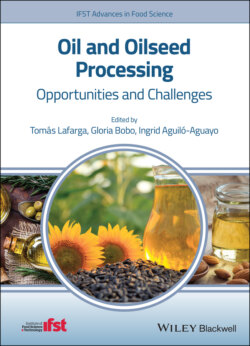Читать книгу Oil and Oilseed Processing - Ingrid Aguilo-Aguayo - Страница 27
1.4 Summary
ОглавлениеWhile discussing the trade in oils and oilseeds, in 2011, Gunstone (2011a) divided countries or regions into four main categories: (i) countries like Argentina, Canada, or Australia which have a small population but produce large amounts of oilseeds and oils, dominating world trade; (ii) countries like Brazil, US, or Indonesia which produce large amounts of oilseeds and oils, and despite the need to feed their own population can still export large quantities; (iii) countries like China, India, and other countries in Asia which despite local production still need to import oilseeds and oil; and (iv) regions like the EU which are essentially traders and produce, consume, import, and export these commodities. Vegetable oil has one of the highest trade shares of production of all agricultural commodities – around 41%. Vegetable oil production will also continue to increase in coming years. Oil production depends on both the crush of oilseeds and the production of tropical oil plants, namely oil palm. Asia, or more explicitly Indonesia and Malaysia are the biggest palm oil exporters (70 and 80% of the oil produced in Indonesia and Malaysia is currently exported) and will continue to dominate oil exports in coming years (FAO 2018). However, environmental policies from the major palm oil importers together with the mainstreaming of global sustainable agricultural norms, are expected to slow the expansion of the oil pam area in Indonesia and Malaysia (FAO 2018).
